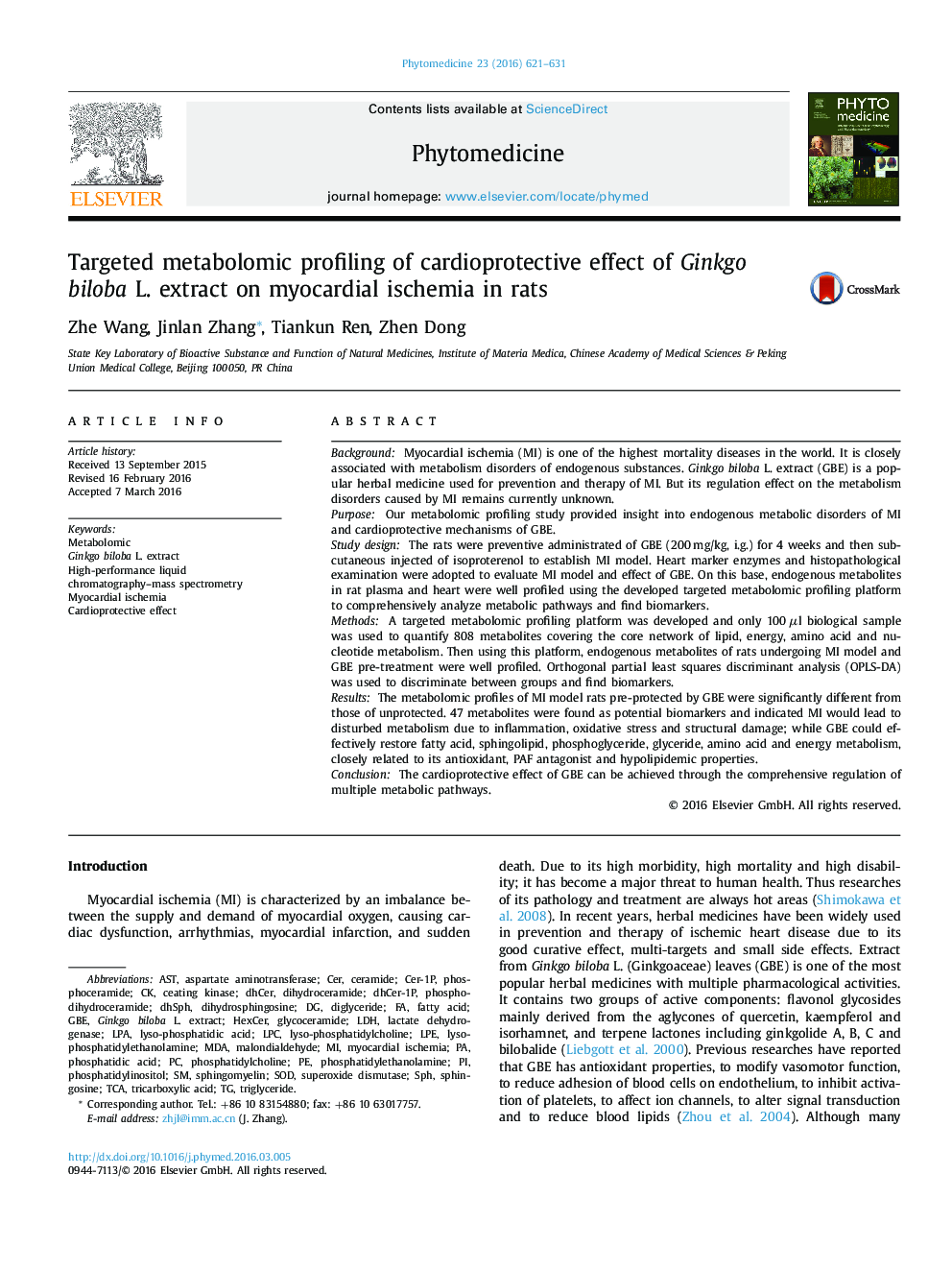| کد مقاله | کد نشریه | سال انتشار | مقاله انگلیسی | نسخه تمام متن |
|---|---|---|---|---|
| 2496233 | 1116115 | 2016 | 11 صفحه PDF | دانلود رایگان |
BackgroundMyocardial ischemia (MI) is one of the highest mortality diseases in the world. It is closely associated with metabolism disorders of endogenous substances. Ginkgo biloba L. extract (GBE) is a popular herbal medicine used for prevention and therapy of MI. But its regulation effect on the metabolism disorders caused by MI remains currently unknown.PurposeOur metabolomic profiling study provided insight into endogenous metabolic disorders of MI and cardioprotective mechanisms of GBE.Study designThe rats were preventive administrated of GBE (200 mg/kg, i.g.) for 4 weeks and then subcutaneous injected of isoproterenol to establish MI model. Heart marker enzymes and histopathological examination were adopted to evaluate MI model and effect of GBE. On this base, endogenous metabolites in rat plasma and heart were well profiled using the developed targeted metabolomic profiling platform to comprehensively analyze metabolic pathways and find biomarkers.MethodsA targeted metabolomic profiling platform was developed and only 100 μl biological sample was used to quantify 808 metabolites covering the core network of lipid, energy, amino acid and nucleotide metabolism. Then using this platform, endogenous metabolites of rats undergoing MI model and GBE pre-treatment were well profiled. Orthogonal partial least squares discriminant analysis (OPLS-DA) was used to discriminate between groups and find biomarkers.ResultsThe metabolomic profiles of MI model rats pre-protected by GBE were significantly different from those of unprotected. 47 metabolites were found as potential biomarkers and indicated MI would lead to disturbed metabolism due to inflammation, oxidative stress and structural damage; while GBE could effectively restore fatty acid, sphingolipid, phosphoglyceride, glyceride, amino acid and energy metabolism, closely related to its antioxidant, PAF antagonist and hypolipidemic properties.ConclusionThe cardioprotective effect of GBE can be achieved through the comprehensive regulation of multiple metabolic pathways.
Figure optionsDownload high-quality image (144 K)Download as PowerPoint slide
Journal: Phytomedicine - Volume 23, Issue 6, 1 June 2016, Pages 621–631
